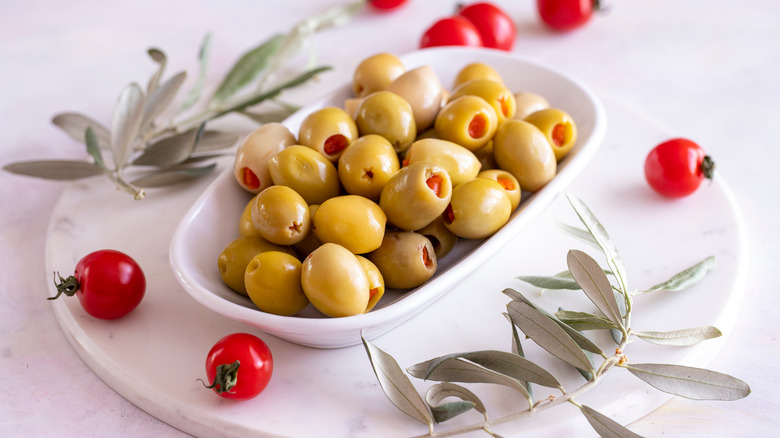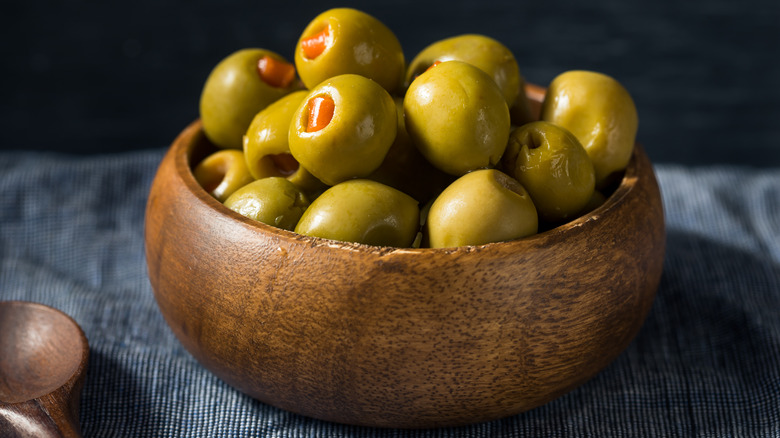Why Are Pimentos Always Stuffed In Green Olives?
If you've ever ordered a classic martini, it almost always comes complete with an olive garnish. Within those olives, the filling varies — it could be garlic, blue cheese, or arguably the most notable ingredient: pimentos.
These little red peppers are so well-intertwined with green olives that it's hard to picture the latter without the former. Aside from a martini garnish, they often appear on the outskirts of a charcuterie board or atop a salad. The olive-pimento duo has been together for years, and as a result, its true origin story is a bit murky. However, the most widely-known theory for why pimentos belong in olives comes down to the flavor contrast. Supposedly, the salty, slightly-bitter olives are enhanced with the sweetness of the pepper, making this garnish into a perfect flavor combination. But who decided this, and how do they get in those tiny olive holes in the first place?
Pimento olives were born in France
Surprisingly, rumor has it that the first pimento-stuffed olives actually originated in France (Provence, specifically) about 300 years ago. Despite that,neither the green olive nor the pimento is native to the country. Olives are actually native to Asia (specifically Iran and the surrounding area), while pimentos are most famous in Spain.
Regardless, the stuffed olives were popularized in France, though it's unclear who first decided to blend this sweet pepper with its salty fruit counterpart. Since then, pimento-stuffed olives have moved to plenty of other parts of the world, including the United States, where you're most likely to find them as a cocktail garnish — one that should most certainly be eaten. These days, you can buy them jarred from the grocery store, usually near the pickles, or you can take on the tedious task of stuffing the olives yourself, though that hardly seems worth it.
How are pimento olives stuffed?
It's clear people love the flavor pairing, but how do pimentos find their way into olive holes in the first place? This answer varies depending on the quality of the olive, but it starts with the pit being removed from the olive's center.
Once olives are picked and brined, they're then run through a machine, which removes their pits; this makes room for the pimento. From there, pimentos are either stuffed by hand or by machine — the main difference being that hand-stuffed olives are usually of higher quality. Up until about 60 years ago, most pimento olives were hand-stuffed, though technology has led to machines being able to do the bulk of the work. However, for the highest-quality olives, real people are still tasked with the tedious stuffing process. If you're purchasing a low-cost variety off the store shelf, the olives were likely stuffed by a machine; however, if you go to a specialty foods store and purchase house made olives, it's more likely they were done by hand.


